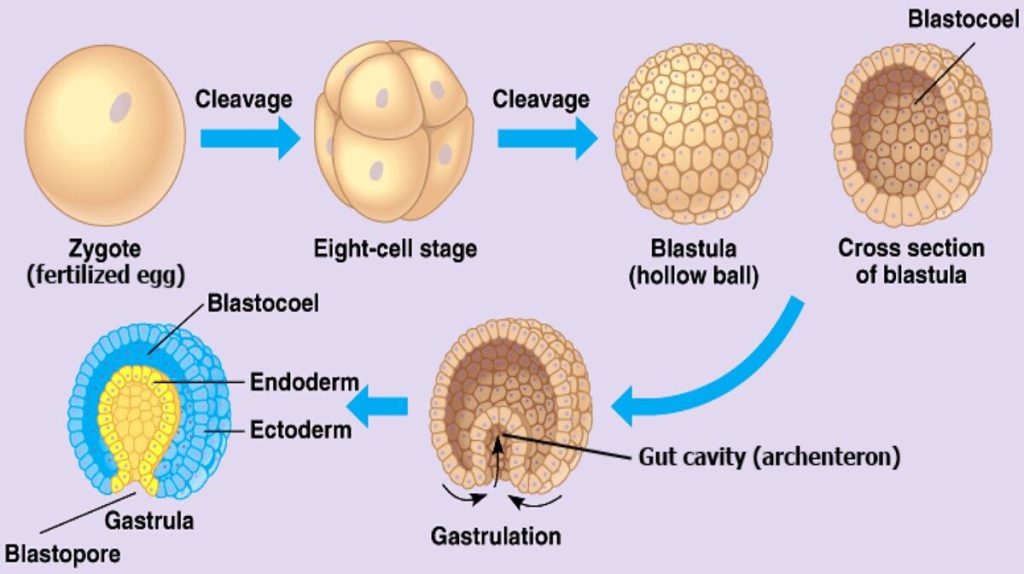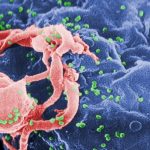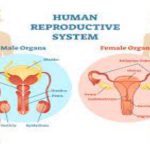
Figure 13.1 Female seahorses produce eggs that are then fertilized by the male. Unlike with almost all other animals, the young then develop in a pouch of the male seahorse until birth. (credit: “cliff1066″/Flickr)
In the animal kingdom, each species has its unique adaptations for reproduction. Asexual reproduction produces genetically identical offspring (clones), whereas in sexual reproduction, the genetic material of two individuals combines to produce offspring that are genetically different from their parents. During sexual reproduction the male gamete (sperm) may be placed inside the female’s body for internal fertilization, the sperm may be left in the environment for the female to pick up and place in her body, or both sperm and eggs may be released into the environment for external fertilization. Seahorses provide an example of the latter, but with a twist (Figure 13.1). Following a mating dance, the female releases eggs into the male seahorse’s abdominal brood pouch and the male releases sperm into the water, which then find their way into the brood pouch to fertilize the eggs. The fertilized eggs develop in the pouch for several weeks.
How Animals Reproduce ?
Some animals produce offspring through asexual reproduction while other animals produce offspring through sexual reproduction. Both methods have advantages and disadvantages. Asexual reproduction produces offspring that are genetically identical to the parent because the offspring are all clones of the original parent. A single individual can produce offspring asexually and large numbers of offspring can be produced quickly; these are two advantages that asexually reproducing organisms have over sexually reproducing organisms. In a stable or predictable environment, asexual reproduction is an effective means of reproduction because all the offspring will be adapted to that environment. In an unstable or unpredictable environment, species that reproduce asexually may be at a disadvantage because all the offspring are genetically identical and may not be adapted to different conditions.
During sexual reproduction, the genetic material of two individuals is combined to produce genetically diverse offspring that differ from their parents. The genetic diversity of sexually produced offspring is thought to give sexually reproducing individuals greater fitness because more of their offspring may survive and reproduce in an unpredictable or changing environment. Species that reproduce sexually (and have separate sexes) must maintain two different types of individuals, males and females. Only half the population (females) can produce the offspring, so fewer offspring will be produced when compared to asexual reproduction. This is a disadvantage of sexual reproduction compared to asexual reproduction.
Asexual Reproduction
Asexual reproduction occurs in prokaryotic microorganisms (bacteria and archaea) and in many eukaryotic, single-celled and multi-celled organisms. There are several ways that animals reproduce asexually, the details of which vary among individual species.
Fission
Fission, also called binary fission, occurs in some invertebrate, multi-celled organisms. It is in some ways analogous to the process of binary fission of single-celled prokaryotic organisms. The term fission is applied to instances in which an organism appears to split itself into two parts and, if necessary, regenerate the missing parts of each new organism. For example, species of turbellarian flatworms commonly called the planarians, such as Dugesia dorotocephala, are able to separate their bodies into head and tail regions and then regenerate the missing half in each of the two new organisms. Sea anemones (Cnidaria), such as species of the genus Anthopleura (Figure 13.2), will divide along the oral-aboral axis, and sea cucumbers (Echinodermata) of the genus Holothuria, will divide into two halves across the oral-aboral axis and regenerate the other half in each of the resulting individuals.

Figure 13.2 The Anthopleura artemisia sea anemone can reproduce through fission.
Budding
Budding is a form of asexual reproduction that results from the outgrowth of a part of the body leading to a separation of the “bud” from the original organism and the formation of two individuals, one smaller than the other. Budding occurs commonly in some invertebrate animals such as hydras and corals. In hydras, a bud forms that develops into an adult and breaks away from the main body (Figure 13.3).

Figure 13.3 (a) Hydra reproduce asexually through budding: a bud forms on the tubular body of an adult hydra, develops a mouth and tentacles, and then detaches from its parent. The new hydra is fully developed and will find its own location for attachment. (b) Some coral, such as the Lophelia pertusa shown here, can reproduce through budding. (credit b: modification of work by Ed Bowlby, NOAA/Olympic Coast NMS; NOAA/OAR/Office of Ocean Exploration) Part a: This shows a hydra, which has a stalk-like body with tentacles growing out the top. A smaller hydra is budding from the side of the stalk. Part b: This photo shows branching white coral polyps.
Fragmentation
Fragmentation is the breaking of an individual into parts followed by regeneration. If the animal is capable of fragmentation, and the parts are big enough, a separate individual will regrow from each part. Fragmentation may occur through accidental damage, damage from predators, or as a natural form of reproduction. Reproduction through fragmentation is observed in sponges, some cnidarians, turbellarians, echinoderms, and annelids. In some sea stars, a new individual can be regenerated from a broken arm and a piece of the central disc. This sea star (Figure 13.4) is in the process of growing a complete sea star from an arm that has been cut off. Fisheries workers have been known to try to kill the sea stars eating their clam or oyster beds by cutting them in half and throwing them back into the ocean. Unfortunately for the workers, the two parts can each regenerate a new half, resulting in twice as many sea stars to prey upon the oysters and clams.

Figure 13.4 (a) Linckia multifora is a species of sea star that can reproduce asexually via fragmentation. In this process, (b) an arm that has been shed grows into a new sea star. (credit a: modifiction of work by Dwayne Meadows, NOAA/NMFS/OPR)
Parthenogenesis
Parthenogenesis is a form of asexual reproduction in which an egg develops into an individual without being fertilized. The resulting offspring can be either haploid or diploid, depending on the process in the species. Parthenogenesis occurs in invertebrates such as water fleas, rotifers, aphids, stick insects, and ants, wasps, and bees. Ants, bees, and wasps use parthenogenesis to produce haploid males (drones). The diploid females (workers and queens) are the result of a fertilized egg.
Some vertebrate animals—such as certain reptiles, amphibians, and fish—also reproduce through parthenogenesis. Parthenogenesis has been observed in species in which the sexes were separated in terrestrial or marine zoos. Two female Komodo dragons, a hammerhead shark, and a blacktop shark have produced parthenogenic young when the females have been isolated from males. It is possible that the asexual reproduction observed occurred in response to unusual circumstances and would normally not occur.


